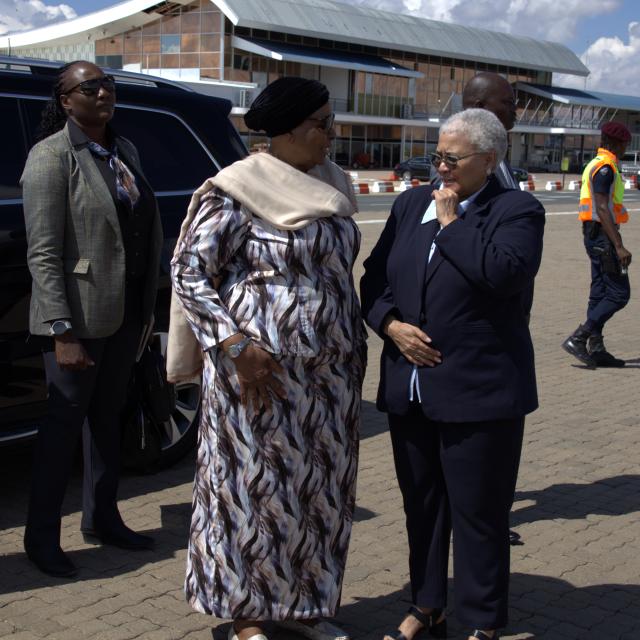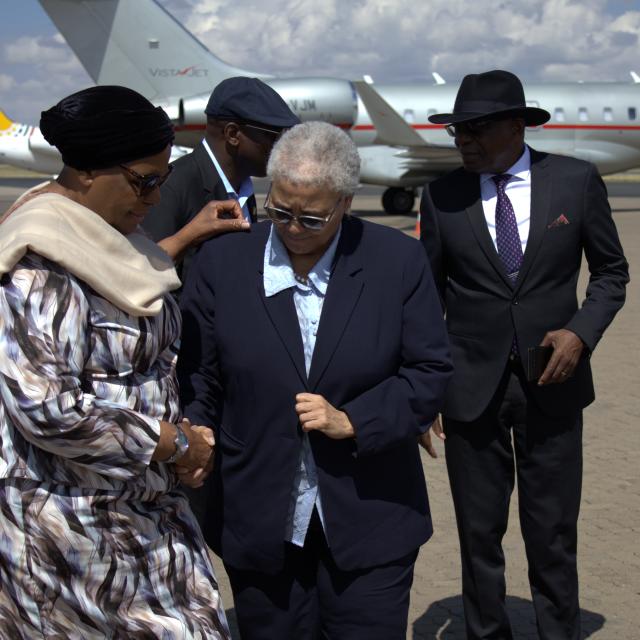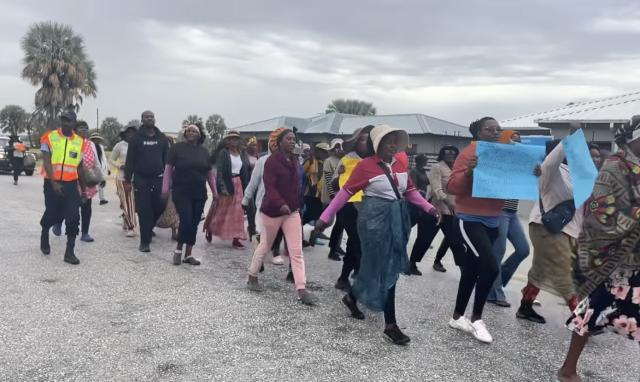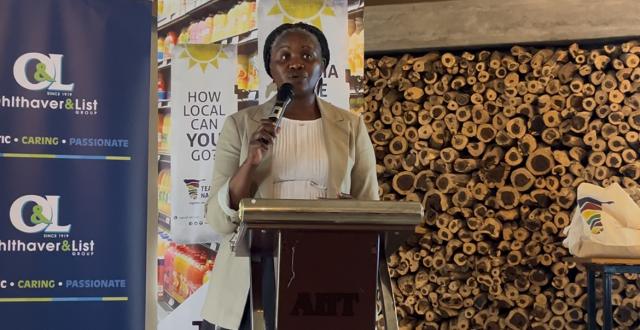
KEETMANSHOOP, 05 November 2025 - The entrance to the Keetmanshoop Vocational Training Centre (VTC). (Photo by: Romario Rhodes) NAMPA

WINDHOEK, 05 November 2025 - President Netumbo Nandi-Ndaitwah conversing with Deputy President Lucia Witbooi before she departs for the COP30 summit in Brazil (Photo: Andreas Thomas) NAMPA

WINDHOEK, 05 November 2025 - President Netumbo Nandi-Ndaitwah conversing with Deputy President Lucia Witbooi before she departs for the COP30 summit in Brazil (Photo: Andreas Thomas) NAMPA

KHORIXAS, 04 November 2025 - Director of Arts and Culture, Manfred Gaeb conducting consultations with traditional leaders and local authority representatives at Khorixas. (Photo by: Dalene Kooper) NAMPA

OMUTHIYA, 04 November 2025 - Local vendors from the Omuthiya open market on Tuesday conducted a peaceful march towards the governor’s office to hand over a petition against the growing number of foreign vendors. (Photo by: Max Henrich) NAMPA

WINDHOEK, 04 November 2025 - Executive" Competitiveness and Branding at the Namibia Investment and Promotion Board, Margareth Gustavo, speaks at the Team Namibia annual general meeting. (Photo by: Justina Shuumbwa) NAMPA

NDIYONA, 03 November 2025- The newly installed streetlights at Ndiyona settlement. (Photo by: Sawi Hausiku) NAMPA

WINDHOEK, 03 November 2025 - Chief Electoral and Referenda Officer Peter Shaama updating the media regarding the 2025 electoral calendar (Photo: Andreas Thomas) NAMPA

Britain's Prime Minister Keir Starmer talks with the finalists during a meeting ahead of the Earthshot Prize 2025 awards ceremony at the Museum of Tomorrow in Rio de Janeiro, Brazil on November 5, 2025. (Photo by Ben STANSALL / POOL / AFP)

US Special Envoy for South and Central Asia Sergei Gor speaks during the C5+1 welcome reception at the State Department in Washington, DC, on November 5, 2025. (Photo by Mandel NGAN / AFP)

Britain's Prime Minister Keir Starmer and Britain’s Prince William, Prince of Wales, gesture during a meeting ahead of the Earthshot Prize 2025 awards ceremony at the Museum of Tomorrow in Rio de Janeiro, Brazil on November 5, 2025. (Photo by Ben STANSALL / POOL / AFP)

US Special Envoy for South and Central Asia Sergei Gor speaks during the C5+1 welcome reception at the State Department in Washington, DC, on November 5, 2025. (Photo by Mandel NGAN / AFP)

Britain's Prime Minister Keir Starmer talks with the finalists during a meeting ahead of the Earthshot Prize 2025 awards ceremony at the Museum of Tomorrow in Rio de Janeiro, Brazil on November 5, 2025. (Photo by Ben STANSALL / POOL / AFP)

US Secretary of State Marco Rubio speaks during the C5+1 welcome reception at the State Department in Washington, DC, on November 5, 2025. (Photo by Mandel NGAN / AFP)

Argentine soccer player Lionel Messi (R) and Miami Mayor Francis Suarez (L) speak at the American Business Forum at the Kaseya Center in Miami on November 5, 2025. (Photo by CHANDAN KHANNA / AFP)

Argentine soccer player Lionel Messi (R) and Miami Mayor Francis Suarez (L) speak at the American Business Forum at the Kaseya Center in Miami on November 5, 2025. (Photo by CHANDAN KHANNA / AFP)